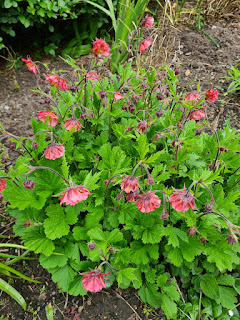Is it a weed? Depends on your outlook!

I'm often asked if a plant is a weed. The plant in the photo, commonly called Garlic Mustard or Jack by the Hedge ( Alliaria petiolata ) , is a spring flowering wildflower. It's a biennial, flowering in it's second year, and it tends to grow in shady places at the edges of woods or by hedges. Whether it's a weed or not depends on whether it's growing where you want it or at least tolerate it in your garden. From a wildlife point of view it isn't a weed - it's a food plant for the orange tip butterfly, one of the earliest butterflies to emerge in the the spring. The photo shows a male. The females' wing tips look grey. Another butterfly which feeds on it is the green-veined white Read more about these butterflies by visiting https://butterfly-conservation.org/butterflies As you might guess from the name, humans eat it as well. The leaves can be used in salads and for making pesto, or as flavouring for fish or meat. I've never tried them but leav...





